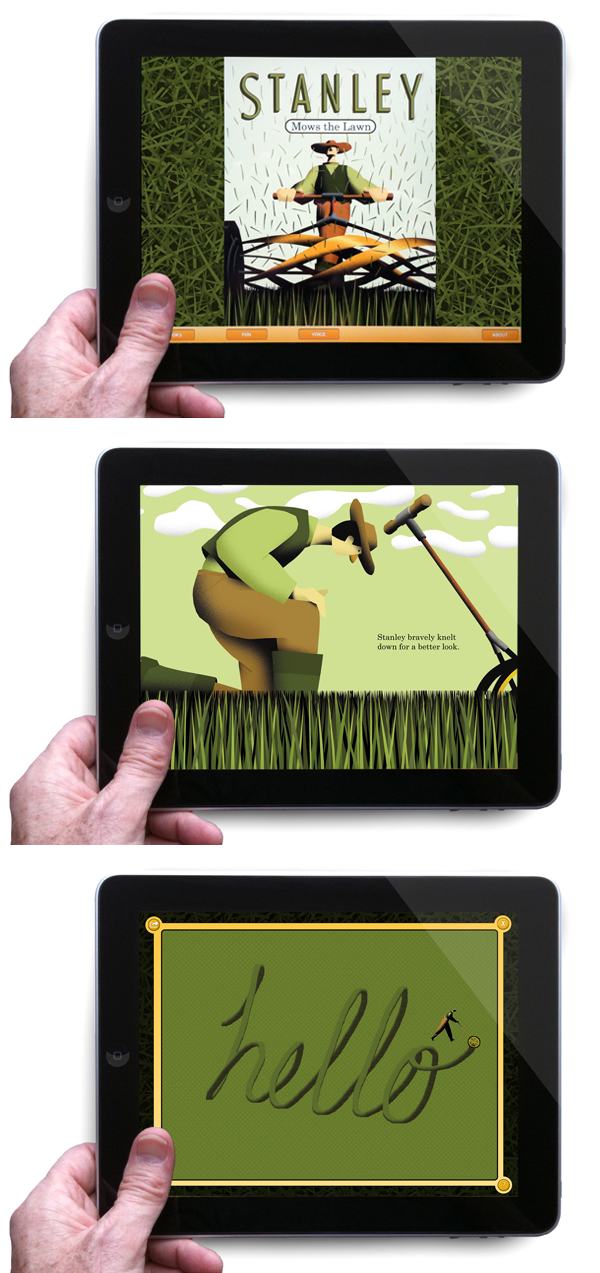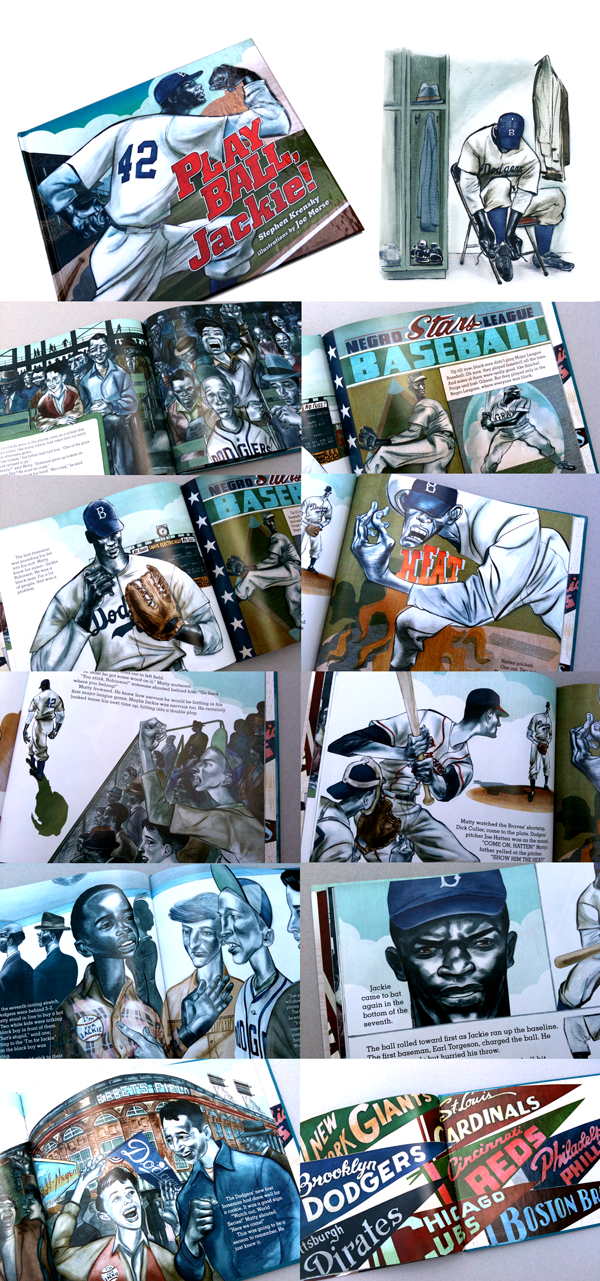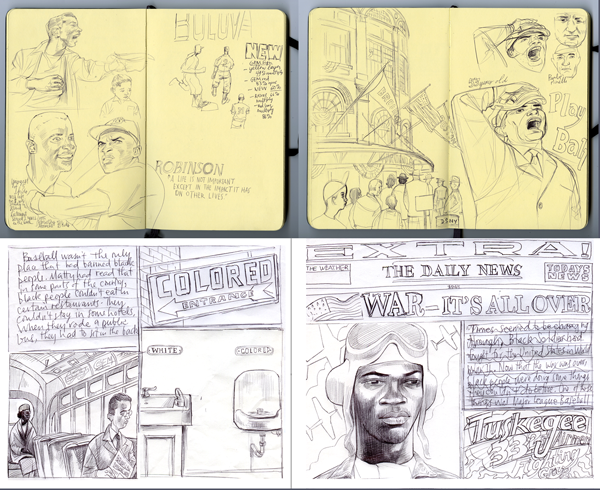Archive for April, 2011
Stanley Mows the Lawn for the iPad!
By Craig Frazier
 It’s springtime and no better time to be mowing your lawn—on your iPad! I am pleased to announce the release of Stanley Mows the Lawn available exclusively for the iPad on Apple’s App Store.
It’s springtime and no better time to be mowing your lawn—on your iPad! I am pleased to announce the release of Stanley Mows the Lawn available exclusively for the iPad on Apple’s App Store.
There’s nothing like the real book in hand—but there is also nothing like the brilliance of color on the iPad—not to mention of fun of swiping pages and playing games. Face it, e-books and apps are here to stay and I’m in favor of all forms of books. So let’s get with it and jump in the pool!
Stanley Mows the Lawn was my second book in the 3-book Stanley series originally published by Chronicle books in 2005. This is one of my favorite books as Stanley discovers his pal Hank the snake and, of course, discovers an entirely new way to mow his lawn and ensuring Hanks survival. This book was awarded the Silver medal from the Society of Illustrators.
The app features 16 luscious illustrations and several enhanced functionalities including the ability to record your own narration as well as ‘text removal’ which allows you to make up your own version of the story—which I really like! It also includes one of my animated shorts and a game that allows you to mow your own lawn in any direction you want—without having to rake up afterwards! And…a preview of my other two Stanley books, soon to be on the iPad.
Thanks go out to the talented Brooklyn-based developer Isaac Schmidt who built it and escaped without any grass stains.
Play Ball, Jackie!
Written by Stephen Krensky | Illustrated by Joe Morse |Millbrook Press 2011
It’s baseball season and no better time to look at Play Ball, Jackie!—a tour de force by author Stephen Krensky and renowned illustrator Joe Morse. Illustration instructor and Coordinator of the Bachelor of Illustration Program at Toronto’s Sheridan Institute, Joe has just finished his second kid’s baseball book since Casey at the Bat. I am in awe that he can produce such a rich and historic book being a full-time illustrator, (Rolling Stone, NY Times, Nike, GQ, to name a few), and full-time teacher. Krensky and Morse chronicle the first professional baseball game played by an African American (Jackie Robinson) in 1947. This is a book about baseball, American history, and humanity. Joe’s illustrations are a testament to his ability to put deeply felt values onto paper. He was generous enough to do an interview with me and share his thoughtful insights and a few of his amazing sketches. Thanks Joe!

Are you a big baseball/Dodger fan? I grew up In Windsor Ontario across the border from Detroit. The Tigers were my team and baseball was the only summer sport played in my neighborhood. I was a pitcher and I idolized Mark ‘The Bird’ Fidrych.
This has an enormous number of illustrations with great detail. How long did it take? When I began the book I wasn’t even sure how large I was going to work. I decided that each page had to be a separate large painting. The book probably took 3 months of 18-20 hour days—I’m not kidding. During the day I would paint outside of my studio so that I didn’t have to wear my gas mask and then every night I was on the computer, only pausing to sleep a couple of hours on a cot.
How much research was involved in making this book? The subject of the book, combining Jackie’s first game with the social history and experience of African Americans in the 1940’s was incredibly daunting. I wanted to get everything right. I researched for 7 months—it took me 4 months to find the scoreboard for the 1947 season. I also wanted to solve the problem of not losing the thread of the game as the story moves out to social history, so I devised different singular images—a newspaper page, a photo album to avoid creating a secondary narrative.
Did you use many reference photos for your illustrations? I searched so many reference photos because the breadth of the book touches on segregation, racism, immigrant experience, the Negro Leagues, and the contributions of black soldiers in WW2. I found very little photographic reference of the actual game, so I constructed all of the images of the game from the various play-by-play descriptions and the physical descriptions of each player involved (from their baseball cards).
Where do all the faces come from? Do I see any family members present in the stands? Yes, my wife and kids appear in the crowd. Matty and his Dad are family friends who agreed to pose. Most of the faces come from months of immersing myself in the crowd scenes of Ebbets Field. I also decided to use recurring characters, like the boy in the Dodger uniform, throughout the book. The image of the woman at the back of the bus is an ironic quote of the famous Rosa Parks photo of her sitting at the front of the bus. I also painted a 1940’s Civil Rights leader Corinthian Nutter as the woman on the bus.
The style of this book is somewhere between a kids book and a graphic novel. What informed that decision? The more I read about Jackie and the post war years in America, the more convinced I became that this story is relevant and important to a young audience today. I didn’t want nostalgia and some quaint antique approach to conjure ghosts of the 1940’s; rather I wanted to create a real game played by real men. This is not ‘Field of Dreams’; this is the story of a pioneer who remained silent in the face of hatred, fear and death threats. I was blessed with an Art Director, Editor and Publisher that encouraged me to push the intensity of the images.
Was the text completed before you began? If not, tell me about your collaboration with the author. The text was finished and placed on each page.
The sketches must have been very precise as each illustration accounts for the text beautifully. I created a sketchbook ‘Bible’ that I wrote down details in and sketched out ideas. But I have found that small thumbnail sketches are the best way to solve such a big project.
Your palette has a period feel, how did you arrive at it? I researched clothing and advertising of the 1940’s. I also wanted a contrast between the graphic, bright ball players and the stories in the stands. I love typography and I spent way too much time searching out all the ads and graphics of the 40’s and they were a great influence.
How are the illustrations created? I had been experimenting on using the computer to color my work and I decided to do this with the book. The original art is first painted in oil and then scanned into Photoshop and colored. The process of painting took days for each piece and so did the computer work.
This is not a ‘duck in the puddle’ book—what’s it feel like to create a book about such a significant event in history? I feel very honored to be a part of this. Real people and real heroes are so important, especially to kids, and I hope this book adds to the Jackie Robinson story. Just before I started to paint the book I received a letter in the mail. It was odd, as it was from the publisher of my first book Casey at the Bat, but there was another letter inside. The ‘inside’ letter had been sent to the publisher in the hopes that the message would reach me; it was from an inmate at a correctional facility in Maryland. He had picked up my book in the library and knowing the story well had spent time just looking at the illustrations, in his words, “Even after I had sent the book over to someone in another cell, I spent the entire evening laying in my bunk and thinking about the artwork and then about baseball and winning and losing and dreams and hopes and whether this book maybe had something to say about my life and, if so, what?” He reminded me of how important it is for us to tell stories with meaning to each other.

















